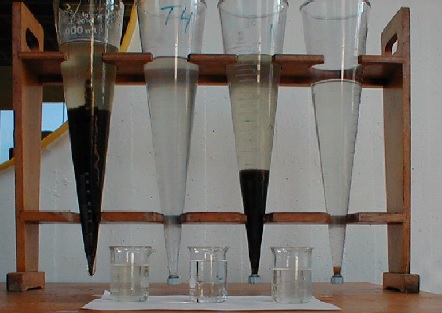The chromaticity of water generally refers to the index for color measurement of all kinds of water. At present, the platinum cobalt chromaticity unit used in our country is mainly due to the platinum cobalt standard colorimetric method specified in GB5750 Standard Inspection Method for Drinking Water, which is also the same for the chromaticity detection of secondary water supply. Then why is chroma a necessary item for secondary water supply? This is about the characteristics of chromaticity.
The common normal colors of natural water are mostly light yellow, light brown and yellow green. When the water body is polluted, various colors will appear. For example, clay can make water yellow; The plant organic matter dissolves in the water, making the water pale yellow or even brown yellow; The algae in the water appears green when there is a large number of algae; Iron oxide will make water brown; Sulfide can make water light blue; The water body polluted by industry presents many colors.
Therefore, it can be judged whether the water quality is polluted by detecting the chromaticity of the secondary water supply.

Colorimetric detection method for secondary water supply
As I told you earlier, the current standard test of colorimetry is the platinum-cobalt colorimetry. This method generally requires the preparation of platinum-cobalt standard solution, including potassium chloroplatinate and cobalt chloride. Dissolve the two reagents with pure water and then dilute them to 1000mL. The standard colorimetry of this solution is 500 degrees. Then take 11 colorimetric tubes, respectively add 0.00mL, 0.50mL, 1.00mL, 1.50mL, 2.00mL, 2.50mL, 3.00mL, 3.50mL, 4.00mL, 4.50mL and 5.00mL of the prepared platinum cobalt standard solution, and then add pure water to the scale line and shake up. At this time, the standard chromaticity is 0 °, 5 °, 10 °, 15 °, 20 °, 25 °, 30 °, 35 °, 40 °, 45 ° and 50 ° respectively.
The prepared water sample shall be compared with these prepared standard solutions by visual inspection. It shall be noted that the observation time line shall be sufficient, and pure white paper can be used as the observation background. Finally, observe the colorimetry vertically from the nozzle and record the colorimetric results. The chromaticity is the standard solution with which the color of the water sample tends to be close.
Different industries have different requirements for the color of water. For example, the color of our drinking water should be less than 15, and other colors should not be displayed; The dyeing water should be less than 5 degrees, and the chromaticity of the textile industry water should be less than 10-12 degrees.
Why should the chroma of secondary water supply be tested
When the water body is polluted, it will show different colors. These colors can be divided into true colors and surface colors. True color is caused by soluble substances in water, that is, the color after removing suspended solids in water. Surface color refers to the color produced when suspended solids in water are not removed.
The water body of the secondary water supply is colored, indicating that it is polluted to a certain extent. Moreover, colored water will affect people's psychology and make people unhappy. For industrial water, it will also reduce the quality of products. Therefore, chromaticity is also one of the parameters that must be tested for secondary water supply.



